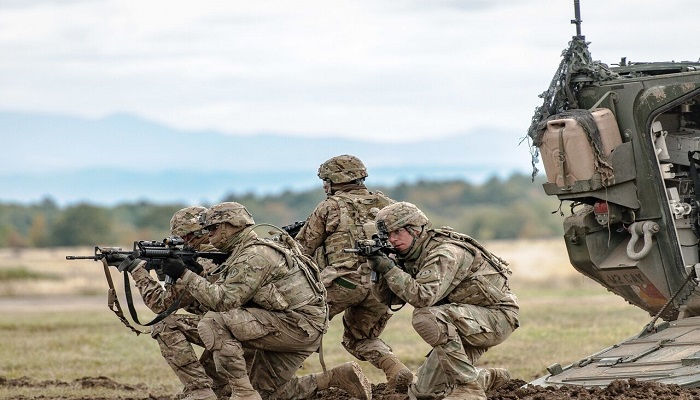PNN – The American weekly Newsweek wrote: Washington still has no clear plan for withdrawing its military assets from Europe. This uncertainty has left European defense planners struggling to fill potential gaps in military deterrence.
According to the report of Pakistan News Network, Newsweek wrote: US Defense Secretary Pete Hegsett told Europeans at a press conference in Warsaw in mid-February: You cannot imagine that the American presence in Europe will be permanent.
US Vice President Donald Trump’s Vice President J.D. Vance also reiterated US attacks against its European allies during a speech at the Munich Security Conference.
A European official involved in the continent’s defense planning, who asked not to be named, told Newsweek: Months after these words, the United States has still not presented a roadmap showing which of its military capabilities it intends to withdraw from Europe and what the countries of the continent urgently need to replace.
The aforementioned official said: The United States has said it will take two years to assess what assets to remove from Europe, meaning the continent cannot effectively plan for its controversial deterrent.
Conventional deterrence refers to non-nuclear military capabilities that make an adversary think twice about attacking a country. For decades, NATO members have benefited from assurances provided by the United States—with its vast nuclear arsenal—to deter the prospect of armed attack under Article 5 of the NATO treaty.
Read more:
Trump’s foreign policy with Rubio: From Signalgate to the diplomatic turnaround.
This legal provision obliges other NATO members to assist any allied country that is subjected to armed attack with an appropriate response.
The US administration has been persistent, despite its unpredictability, in pressuring NATO members to significantly increase defense spending. European political and military officials widely acknowledge the continent’s long-term reliance on the US and are committed to bolstering their defense industries through significant increases in investment.
The United States has been shouldering expensive military spending in Europe for years, including logistics, strategic spending, communications, intelligence and reconnaissance capabilities, as well as airborne electronic warfare and ammunition depots.
Christopher Cowley, the top U.S. commander in Europe, said last April that more than 80,000 U.S. military personnel are stationed in Europe. Some are permanently stationed, while others are rotated to Europe or occasionally deployed to these countries for training exercises.
The European official involved in the continent’s defense planning also said that Europe “must act immediately” because the continent is currently “vulnerable.”
European officials expect the upcoming NATO summit in The Hague, scheduled for late June, to determine how NATO’s European members will share the responsibility for strengthening their military capabilities.
The Financial Times wrote in a report on the same subject: It will take between 5 and 10 years for Europe to be able to develop capabilities to replace the military capabilities offered by the United States, with the exception of nuclear weapons.
Cowley’s comments contradict reports about the Trump administration’s decision to reduce the US military footprint in Europe and surrender its role as NATO’s Supreme Allied Commander Europe.

